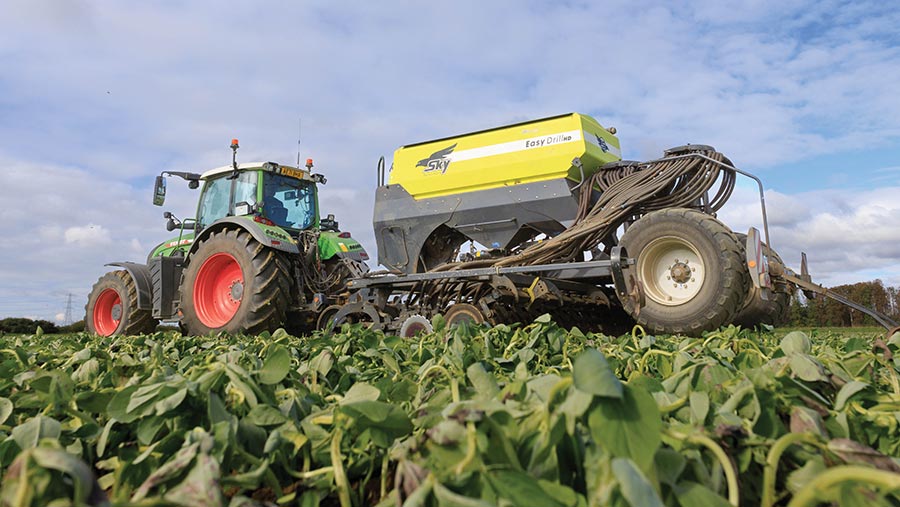‘No quick fix’ as regen ag leads to lower yields
 © Tim Scrivener
© Tim Scrivener Growing cereals using regenerative farming techniques has been shown to reduce yield by about 10% compared with ploughing the soil, at least in the initial years of transition, a major new study run by Rothamsted Research has shown.
The first set of results from 24 trials first set up at Brooms Barn, Suffolk, and Harpenden, Hertfordshire, in 2017-18 have been published this week and confirm that reduced tillage resulted in lower crop yields – 7.4t/ha compared with 8.3t/ha at Brooms Barn, and 6.3t/ha compared with 6.9t/ha at Harpenden.
See also: Regenerative farming – the theory and the farmers doing it
The reduction varied according to the site, the crop previously grown in the field and the crop rotation, but overall the ploughed plots produced a higher caloric yield than systems under reduced tillage, the researchers found.
At 7.9t/ha, average wheat yields were higher at Brooms Barn than at Harpenden, where yields averaged 6.6t/ha, but part of the reason was because some plots were resown with spring wheat due to establishment failures at Harpenden.
Adding organic matter to the soil in the regenerative plots made a significant difference – spring barley yield increased by 8% on average.
No quick fix
Study team leader Prof Jon Storkey said the results so far suggest that regenerative farming is not a “quick-fix”, with time needed to restore soil health and the ecosystem before benefits kick in.
But that could change as the system transitions to a more sustainable state.
“With so many variables in play, only a long-term, integrated approach will be able to tell us what really works in regenerative farming,” said Prof Storkey.
The trial sites have contrasting soil types – Brooms Barn a sandy loam and Harpenden a silty clay loam.
Among the growing techniques used were no-till and diversified cropping.
In the long term, the trial will look at how different approaches to crop rotation, tillage, nutrition and crop protection might reduce inputs of pesticides and fertilisers, greenhouse gas emissions and support biodiversity, to investigate the synergies and trade-offs of each approach.
The team hopes the research will prompt similar experiments in other countries.
Prof Storkey said it was inevitable that trade-offs would be needed between maximising crop yield and protecting the environment.
“We need to better understand cropping as a complex system. That way we can create models for predicting the system response to the multiple factors that will affect farming as our climate and food demands change,” he said.

